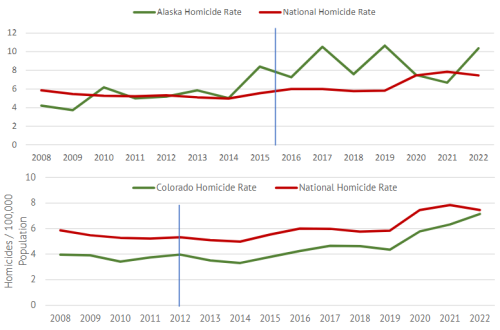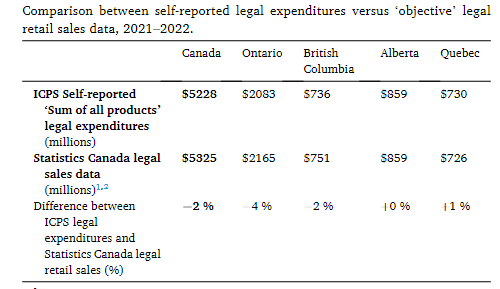WHAT’S NEW @ Drug War Facts
Feature Article: Those who forget the mistakes of the past are doomed to repeat them.
In the spirit of a paraphrased quote from noted philosopher George Santayana, a new section concerning the history of illicit drugs in the United States has been created in Drug War Facts. Travel from the “International Policy” home page link to the “United States” chapter under it, and you’ll find seventeen Facts from thirteen sources that overview the history of the drug war.
The short version (sources in parentheses):
• “Probably indigenous to temperate Asia, C. sativa is the most widely cited example of a ‘camp follower.’ It was pre-adapted to thrive in the manured soils around man’s early settlements, which quickly led to its domestication … Hemp was harvested by the Chinese 8500 years ago. … The crop was first brought to South America in 1545, in Chile, and to North America in Port Royal, Acadia in 1606 … From the end of the Civil War until 1912, virtually all hemp in the US was produced in Kentucky.” (1)
• “For most of American history, growing and using marijuana was legal under both federal law and the laws of the individual states. By the 1840s, marijuana’s therapeutic potential began to be recognized by some U.S. physicians. From 1850 to 1941 cannabis was included in the United States Pharmacopoeia as a recognized medicinal.” (2)
• “The use of cocaine has persisted for centuries: sixteenth century Incan tribes’ use of cocaine [*] fascinated conquistadores … Until the end of the nineteenth century, cocaine was a prominent feature of U.S. medical journals … By the beginning of the twentieth century, however, the dangers of addiction became apparent, and a movement to outlaw cocaine was born.” (3)
• “Crude opium has been available for thousands of years, but with the expansion of British opium trade in Asia in the 18th and 19th centuries and the development of the hypodermic syringe in the late 1860s, the abuse of opioids rose dramatically. By the late 19th century, global concern with opium consumption and trade reached a critical juncture, which led to public and professional pressure to restrict medical access to opioids for pain relief.” (4)
• “MDMA is not a new drug. It was first synthesized by the German pharmaceutical firm Merck in 1912. Human experimentation, however, has been traced back to the early 1970s.” (5)
• “The United States has sought to control the use and trade of drugs since the adoption of the Harrison Act in 1914, which confined the distribution of heroin and cocaine to physicians. Drug policy focused on public health issues until the 1920s when the Temperance movement, in conjunction with ‘attitudes of nationalism, nativism, fear of anarchy and of communism’ shifted public perception to view drug abuse as a national security threat. This era saw the enactment of the Volstead Act, enforcing the Eighteenth Amendment’s prohibition on alcohol, and the establishment of the Federal Narcotics Bureau.” (6)
• “By all estimates, the Eighteenth Amendment was a costly blunder. Between 1920 and 1930, the federal government spent an average of twenty-one million dollars enforcing the Volstead Act. During the same period, the United States lost an estimated $1.25 billion in potential tax revenues annually.” (7)
• “In 1971, President Nixon officially declared a ‘war on drugs,’ identifying illegal drug use as ‘public enemy number one.’ Over the past forty years, the War on Drugs has caused momentous transformations in crime policy, magnifying racial disparities in incarceration and amplifying the prison population.” (8)
• “A myriad of high-profile but ultimately unsuccessful campaigns against drug abuse defined President Reagan’s strategy to combat the drug epidemic. Reagan officially launched the ‘War on Drugs’ on June 24, 1982, with the creation of the White House Office of Drug Abuse Policy. First Lady Nancy Reagan joined the movement, announcing the ‘Just Say No’ campaign in 1982. … By the end of Reagan’s first term, however, drug abuse had not declined in any appreciable sense.” (3)
• “The President’s Fiscal Year (FY) 2012 National Drug Control Budget requests $26.2 billion to reduce drug use and its consequences in the United States. This represents an increase of $322.6 million (1.2 percent) over the FY 2010 enacted level of $25.9 billion.” (9)
What was that quote about repeating the mistakes of the past?
===
The sources for these quotes can also be found in the July 2011 edition of the “WHAT’s NEW @ Drug War Facts” e-newsletter.
* Editor’s Note. It is likely that this source is referring to coca leaf, and not processed cocaine as cocaine alkaloid was not extracted from coca leaves until around 1860. (10)



